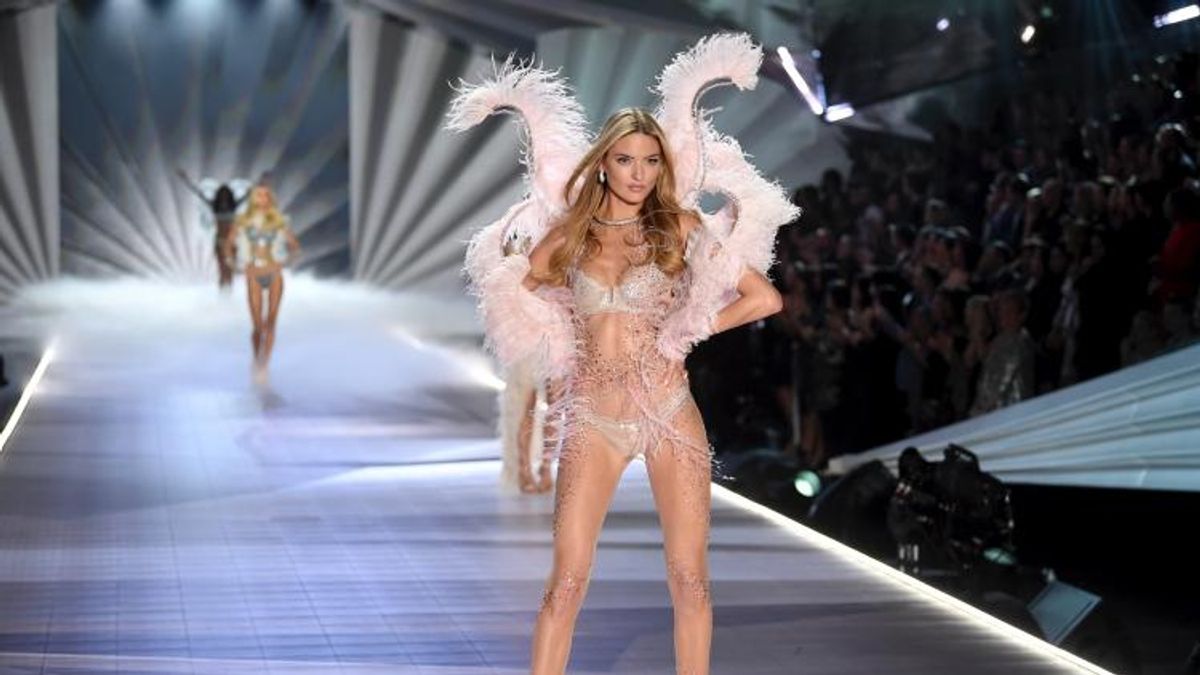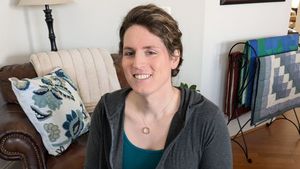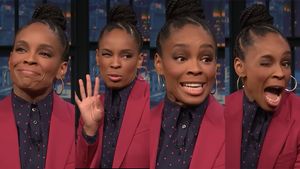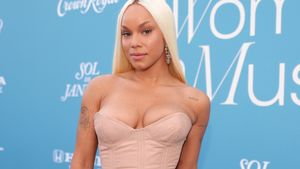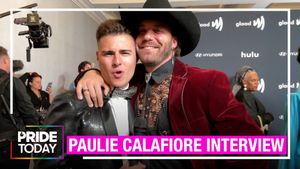Fourteen-year-old me could never resist the spell of the Victoria's Secret catalog arriving in the mail. I'd spend hours poring over the pictures of the models, especially devouring every photograph of Angel-of-the-moment, Ms. Helena Christensen. There was something about her aquamarine eyes that had me absolutely captivated.
But there was something else -- beyond the sexual awakening -- happening as my teenage self internalized those images. At least once a week, my friends and I would inevitably end up at the River Ridge Mall. Once inside, we'd make our way into the synthetic-cherry-haze of the Victoria's Secret store to revel in all things pink and lace. Together, feeling utterly adult, we pinched each cup to find which had the most padding (liquid gel inserts were popular back then -- I definitely had a few sets) so we could look more like the angels we saw above us. We were devoted followers of their fantasy.
It was in those fitting rooms, squeezing my teenage ribcage into a too-small bra, my arms covered in their sparkling body lotion, that something changed in me. I was no longer a girl simply trying to become a woman. I became, instead, someone who learned how to hate herself.
As a grown woman looking back now, I can faithfully say that those teenage years -- filled with disordered eating, lying to my loved ones, and depression -- still count as the darkest period in my life. If it wasn't for my family and support system, I don't quite know how I would have emerged as a healthy and whole human being. Once I did, I realized that fashion was not found in the fitting rooms that distorted my body. After exploring the world of design (I majored in architecture), I discovered the artists at the center of the fashion industry who were focused on innovation in silhouette and fabric. From them, I learned how to make clothes that would help people love themselves.
Today, I am the designer, founder, and chief executive officer of Chromat, a New York-based design house that specializes in swim and bodywear. Last year, I was awarded as a runner-up from the CFDA/Vogue Fashion Fund, which celebrates the very best emerging design talent in America. I show our collection every season at New York Fashion Week, alongside staple American brands like Ralph Lauren, Calvin Klein, and Marc Jacobs. Our work has been photographed and featured in some of the most prominent fashion magazines in the world, from Vogue to Glamour to Elle and beyond.
Chromat's success -- commercially and among the press -- is a direct result of our point of difference in the very crowded swim and lingerie space. As a women at the helm of a swim or lingerie brand, I've refused to compromise on inclusivity as a pillar of our business model. That means Chromat has always designed for a wide range of sizes (we currently offer sizes 00 -- 30 at chromat.co), and for all different bodies, ages, abilities and places on the gender spectrum. As a queer woman, I do not focus on designing clothes to make the wearer more appealing to men. Rather, I want our clothes to empower anyone who wears them to harness the strength and beauty within themselves.
Some of the proudest moments of my career come from watching our models walk down the runway to cheers that would deafen the audience goers at the Victoria's Secret spectacle. We don't just have models in our #ChromatBABE cast -- we have Geena Rocero, TED speaker, film producer, and global advocate. We have Denise Bidot, a proud mother and body-positive activist. We have Mama Cax, a bone-and-lung cancer survivor, who walked our runway on crutches to the roars of support from the front row. On the Chromat runway you see curves, cellulite and scars worn proudly. We are a runway show, yes -- but we are also a celebration. We are what happens when design doesn't center the male gaze, but instead, the wearer.
Mr. Ed Razek, the chief marketing officer of Victoria's Secret parent company, recently gave an interview to Vogue where he proclaimed -- among other misguided statements -- "Shouldn't you have transsexuals in the show? No. No, I don't think we should. Well, why not? Because the show is a fantasy. It's a 42-minute entertainment special. That's what it is."
Related | Trans Women Don't Exist in Victoria's Secret's Fantasy World
Beyond Mr. Razek's use of the outdated word "transsexual," which no executive in corporate America should be allowed to use without punishment in the year 2018, he implies that trans women are not a part of the fantasy. In turn, I've watched our LGBTQ+ Instagram feeds light up with images of trans women all over the world who are dripping in fantasy: Carmen Carrera, Munroe Bergdorf, Maya Mones, Isis King, Andreja Pejic, Jari Jones, Fatima Lewis, Lea T, Trace Lysette, Siobhan Atwell and more.
Razek's comments do not just expose what happens when a white, cisgender man is the final decision maker for a global lingerie brand: They are the embodiment of everything that's wrong with the company's values in a society that has evolved beyond the patriarchy's ideal representation of a woman.
Even before Razek's remarks, more of us should have been talking about the negative effects of Victoria's Secret's narrow definition of beauty. One of the worst things I've realized over the years is that my experience with disordered eating isn't an anomaly, it's par for the course: In fact, one study shows that approximately 91% of women are unhappy with their bodies, and resort to dieting to achieve their ideal shape. It is unforgivable that we live in a society where it's normal or expected for teenage girls to grow up hating themselves.
Victoria Secret has a global platform -- one that can be used to push the cultural conversation forward and open up its brand to include and reflect the beautiful and inspiring people in the world. And I believe that there's still room for change, but this would require that decision-makers come from diverse perspectives, and their feedback is taken seriously at the executive level. Only when Victoria Secret's is as diverse as our greater community -- on the runway and in the boardroom -- will the runway show be truly inclusive.
As consumers, I encourage you to "vote with your dollar" and support brands (like mine, and many others) who reflect your values. We may not be able to influence the corporate policies of Victoria's Secret, but that's not really the point anyway: The point is to remove their power, which comes from the millions who watch their televised show and buy their bras. We all must shop and consume responsibly.
Oh, and one last word for Mr. Razek: You haven't seen a Fantasy until you've seen voguer, actress, and proud transgender woman Leyna Bloom close a runway show. Her walk would leave your entire cast of Angels utterly fallen.
